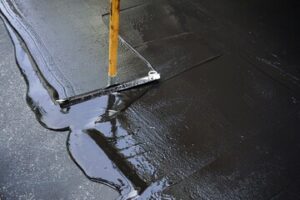HVAC (Heating, Ventilation and Air Conditioning) systems control the temperature in buildings and homes. They also regulate indoor air quality and humidity levels.

Keeping up with HVAC system maintenance reduces energy consumption. Installing energy-efficient equipment with high SEER, HSPF or AFUE ratings reduces operating costs. Contact Ausco Air Heating & Air Conditioning for professional help.
HVAC workers should receive regular refresher courses or seminars to stay aware of industry hazards and safe work practices.
Whether you work from home or in an office, the quality of your working conditions has a direct impact on your productivity. Studies show that workers perform better when the temperature is regulated and they feel comfortable. Additionally, ventilation systems help reduce dust and airborne allergens that cause respiratory problems. HVAC equipment can also provide fresh air, resulting in improved moods and a sense of well-being.
HVAC maintenance technicians can inspect your system to identify any issues that may affect performance, energy efficiency or indoor air quality. They can clean and lubricate system components, such as motors and fans, and they can even clean or replace filters and ductwork. Qualified professionals can also calibrate HVAC systems to guarantee their performance meets specific requirements and minimize energy consumption.
Since the energy crisis of the 1970s, environmental concerns and energy efficiency have been important for both business owners and the industry. As a result, the HVAC industry has made many innovations in heating and cooling technology to create systems that consume less energy. These advancements include the use of alternative energy sources and the development of new materials to reduce heat loss.
Another benefit of an HVAC career is its high pay and job security. Moreover, it’s possible to gain the skills and training for an HVAC career without spending four years in college. Many trade schools and community colleges offer programs that last 1-2 years and are highly affordable.
The HVAC industry also pays attention to its employees’ health and safety needs. In addition to promoting healthy working environments, it aims to improve its employees’ work lives by offering benefits such as a retirement plan, medical insurance and flexible hours. In addition, some employers have developed a culture of workplace excellence that prioritizes both efficiency and employee wellbeing.
Increased Productivity
While employers are always seeking ways to boost productivity, they may be overlooking one very important factor: the temperature and air quality in their workplaces. Studies show that working in a comfortable environment can significantly improve cognitive functioning and boost performance.
If a space is too cold or too hot, employees may become distracted or uncomfortable, which leads to decreased concentration and performance. A well-maintained HVAC system, on the other hand, can keep the environment at a consistent level of comfort and enhance productivity.
Poor air quality can also cause headaches, fatigue, and difficulty concentrating – often referred to as “sick building syndrome.” HVAC systems provide cleaner, healthier indoor air by preventing the spread of harmful pollutants and allergens. They also ensure that the spaces have sufficient ventilation, bringing in fresh air and removing stale, stagnant air.
It is no secret that a comfortable working environment can positively affect employee morale and overall work ethic. In fact, companies that focus on their HVAC systems and regularly schedule maintenance are more likely to see lower absenteeism rates and higher productivity levels.
In addition to boosting morale and increasing productivity, the maintenance of HVAC systems can improve safety as well. Unlike more sedentary office jobs, technicians are constantly moving around the facility and engaging in active work, which is great for their cardiovascular health and overall physical wellbeing. However, if their equipment is not properly maintained, it can lead to a variety of problems, including inefficient operation and breakdowns. An HVAC technician who performs regular maintenance can catch and address these issues before they turn into costly repairs. This will save businesses time and money. It will also ensure that the system is operating as safely and efficiently as possible.
Reduced Maintenance Costs
In addition to saving on emergency repairs, scheduled maintenance can reduce energy costs. When HVAC systems are properly maintained, they can operate at peak efficiency. This translates into less power consumption, a lower demand for electricity on the electric grid and lower carbon emissions associated with fossil fuel production.
Whether it’s dust accumulation on air conditioning coils, clogged filters or a minor refrigerant leak, all these little problems add up and force an HVAC system to work harder than normal. That extra work takes more electricity to complete and eats into the system’s lifespan. Regular HVAC maintenance and cleaning can eliminate these little issues before they turn into major repair bills.
Another way to save on HVAC maintenance is by buying parts and supplies in bulk and establishing relationships with suppliers. These are simple steps that can drastically cut down on expenses and ensure that your technicians always have the materials they need to keep a building running smoothly.
If you’re a contractor, implementing these methods into your service offerings can help you optimize hvac yearly maintenance cost. In the end, you’ll be able to offer lower rates for your services and achieve long-term savings for your customers. The best part is that you’ll be able to provide your customers with peace of mind knowing that their systems are well-maintained and have longer lifespans.
Most organizations underfund their maintenance budgets. This is partly due to the fact that many C-suite executives do not have facility experience and don’t fully understand the need for routine, preventive maintenance. For most of them, maintenance is an overhead expense and needs to be minimized to improve profit margins. To change this, facility managers should demonstrate the rate of return on investment that regular maintenance provides and make it a priority to include funding in every budget.
Increased Energy Efficiency
Many people overlook energy efficiency when it comes to HVAC systems, but it is an important aspect of the overall system. Energy-efficient systems use less power and operate more smoothly, resulting in lower energy bills and reduced environmental impact. Energy-efficient designs also help to ensure occupant comfort and minimize draftiness and hot or cold spots.
Upgrading an existing system to a more efficient model is another way to reduce energy consumption. Newer systems often have advanced technology that improves performance and allows for smarter operation. Energy-efficient models are also more cost-effective over time due to reduced maintenance costs and a longer lifespan of the equipment.
Property owners can also improve HVAC energy efficiency by implementing zone control. This allows the system to be used efficiently, only heating or cooling specific areas when they are occupied. This cuts down on over-heating or over-cooling unused spaces, saving energy and lowering utility costs. Smart thermostats are another valuable tool for improving energy efficiency. These systems can analyze weather data and occupancy patterns to optimize temperature settings and scheduling.
Increasingly stringent environmental regulations have led to the development of HVAC systems with higher levels of efficiency, which are now being offered in the commercial market. These new systems can help businesses and commercial facilities meet their sustainability goals while reducing their utility bills and minimizing their environmental impact.
The best way to reduce energy consumption is to upgrade to a more efficient system. Older systems can become inefficient over time, leading to high energy bills and higher maintenance costs. By upgrading to a more efficient model, building managers can significantly cut their energy usage and reduce their operating costs.
Sustainable Urban Planning
In many cities around the world, sustainability is a major concern. Urban planners are constantly seeking ways to improve the environment, reduce greenhouse gas emissions, and make the city a more sustainable place for its residents.
One way to achieve this goal is through HVAC systems that are designed with energy efficiency in mind. By implementing these systems in your building, you can cut down on your energy consumption and contribute to the environment. Additionally, you may be able to take advantage of local laws and incentives that encourage green construction.
As we continue to urbanize, it is crucial that we develop ways to make cities more sustainable. This includes the physical use of land, the use of water resources, and the conservation of biodiversity. It also includes social issues, such as equality and diversity.
While many factors can help make a city more sustainable, the key to success lies in the planning process. This requires careful consideration of all aspects and a willingness to change long-held habits. While this can be a difficult task, it is worth the effort in the long run.
For example, a common challenge is to reduce the reliance on cars. This will require people to plan their journeys differently and invest in public transportation, which can be an expensive endeavor. However, if we can overcome this challenge and begin to rely on sustainable modes of transportation, we will be well on our way to making cities more sustainable.
Another aspect of sustainable urban planning is the incorporation of cultural amenities into city centers. These can rehumanize a city and help it define its identity. This includes museums, cultural centres, and other venues that promote art and community interaction. Additionally, sustainable urban planning should incorporate water conservation. This involves utilizing sustainable building designs that minimize the need for irrigation, using rainwater when possible, and implementing other water-saving strategies.
